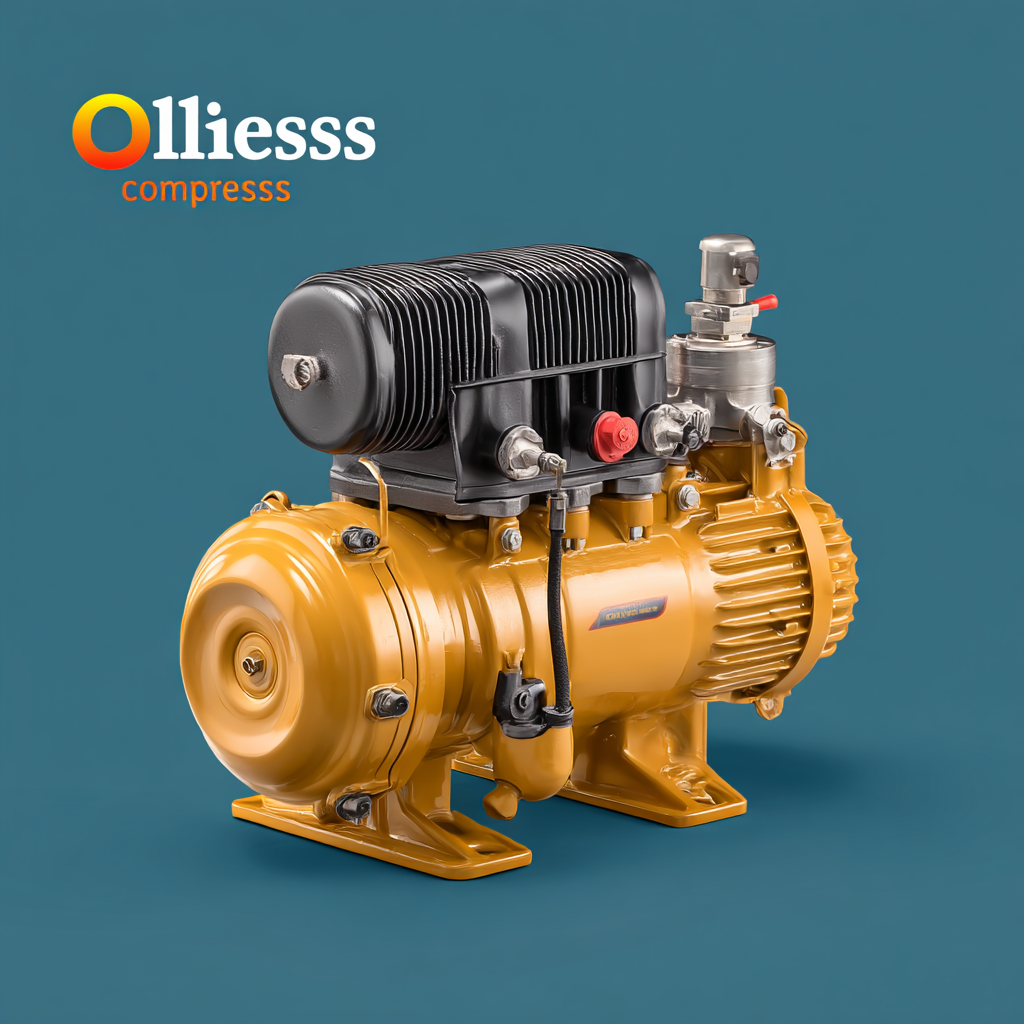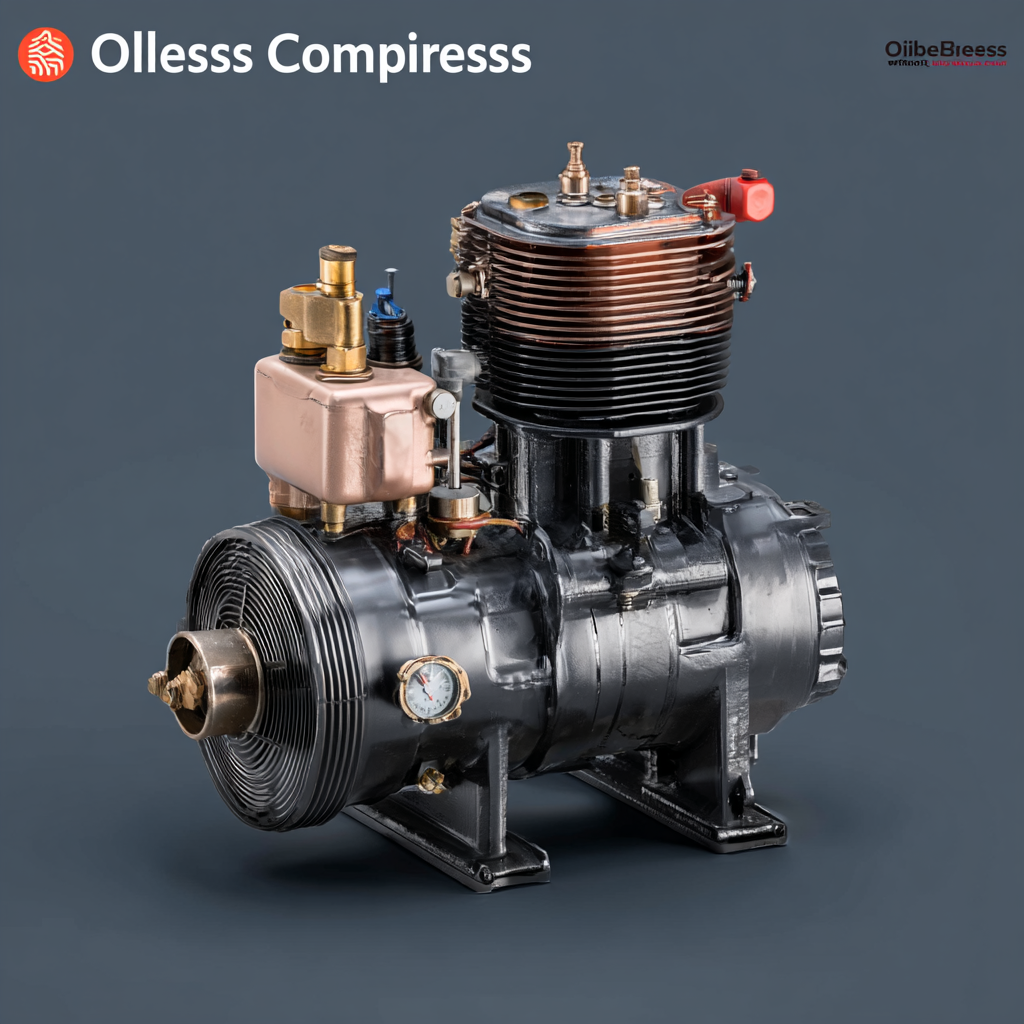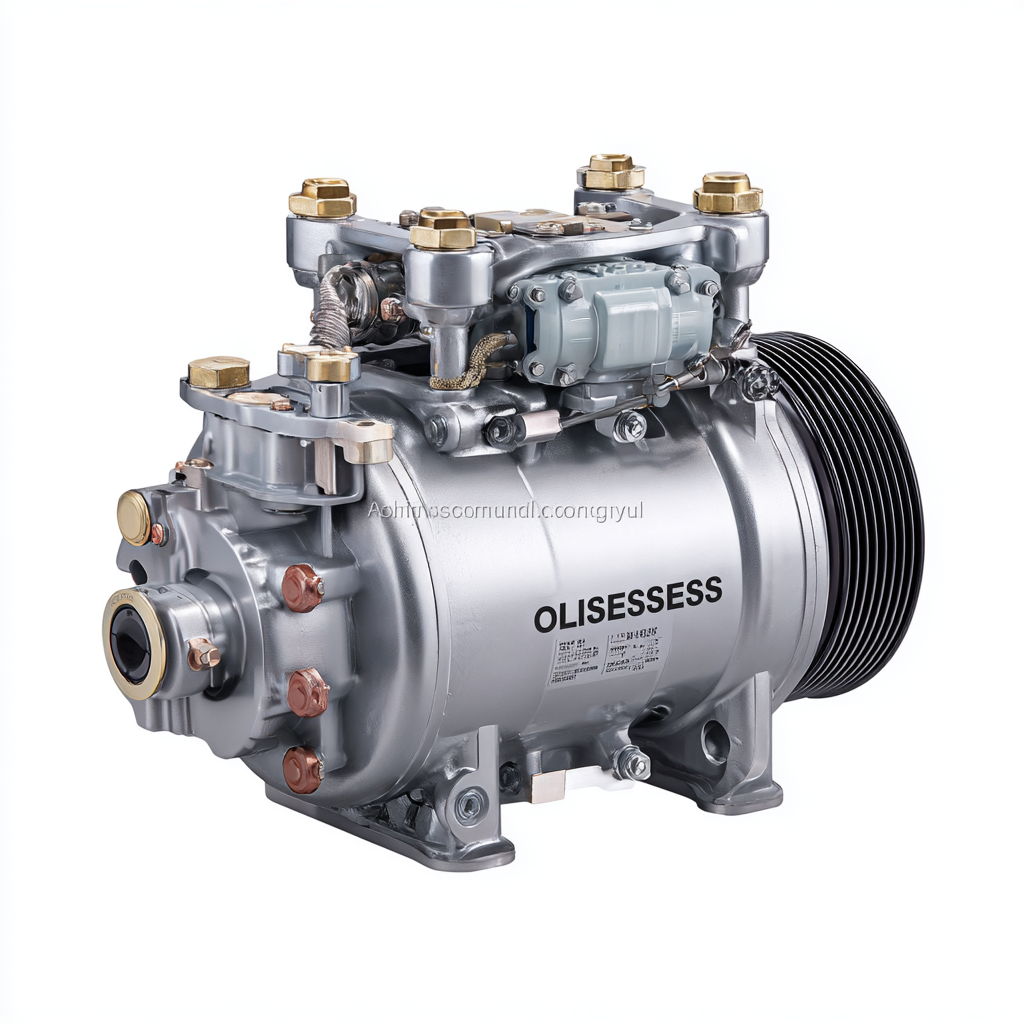
Best Oilless Air Compressor Market Trends and Future Strategies for Global Buyers by 2025
The oilless air compressor market is witnessing notable growth, driven by increasing demand across various industries, including healthcare, food and beverage, and electronics. According to a recent market analysis report, the global oilless air compressor market is projected to reach USD 9.6 billion by 2025, growing at a CAGR of 4.8% from 2020 to 2025. This growth can be attributed to the rising awareness of environmental sustainability and the need for clean, oil-free air in precision applications. As global buyers navigate this evolving landscape, understanding the latest trends and developing effective future strategies will be crucial.

In this blog, we will explore the "Comparison" type analysis of the oilless air compressor market, providing insights into technological advancements, product innovations, and key player strategies that are shaping the future of this vital industry.
Emerging Innovations in Oilless Air Compressor Technology for 2025
As we look ahead to 2025, the oilless air compressor market is set to undergo transformative changes driven by emerging innovations in technology. According to a recent report by MarketsandMarkets, the global oilless air compressor market is projected to grow at a CAGR of 6.2% from 2020 to 2025, reaching a valuation of $5.1 billion. This growth can be attributed to increasing demand across various sectors, including healthcare, food and beverage, and electronics, where oil contamination poses significant risks.
Innovations such as variable speed drive (VSD) technology are leading the charge in enhancing energy efficiency and reducing operational costs for users. VSD-equipped oilless air compressors not only adjust power based on air demand but also reduce noise levels, making them ideal for environments where quiet operation is critical. Furthermore, advancements in materials and designs are resulting in compact models that maintain performance without sacrificing space—a vital feature for modern industrial settings. Research from Statista indicates that by 2025, the adoption of smart compressing technologies that integrate Internet of Things (IoT) functionalities will further optimize performance, offering predictive maintenance capabilities and real-time monitoring to improve reliability and efficiency.
Key Market Players and Their Strategies in the Oilless Air Compressor Sector
The oilless air compressor market is witnessing significant growth, driven by advancements in technology and rising demand across various industries. Key market players are focusing on innovative strategies to cater to both consumer needs and environmental regulations. According to a recent report by Research and Markets, the global oilless air compressor market is projected to reach USD 2.5 billion by 2025, with a CAGR of 6.7% from 2020, illustrating the robust expansion of this sector.

Leading companies like Atlas Copco, Ingersoll Rand, and Makita are leveraging their R&D capabilities to enhance product efficiency and reduce overall operational costs. For instance, Atlas Copco has introduced a new line of portable, oilless compressors that offer enhanced durability and lower noise levels, making them ideal for construction and indoor applications.
Furthermore, these companies are also adopting sustainability strategies by incorporating energy-efficient technologies and materials that align with global environmental standards.
Additionally, as businesses increasingly prioritize compact and lightweight equipment, manufacturers are also exploring redesigning their product lines to meet evolving market demands. The emphasis on portability without compromising performance is set to reshape the competitive landscape, with companies that can effectively balance innovation and practicality expected to capture significant market share in the coming years.
Consumer Preferences and Demand Drivers in the Oilless Air Compressor Market
The oilless air compressor market is witnessing significant shifts in consumer preferences and demand drivers as we approach 2025. According to a report by Custom Market Insights, the global oil-free air compressor market is projected to grow substantially, reaching USD 8.34 billion at a CAGR of 5.42%. This growth is primarily driven by industries seeking reliable and environmentally friendly solutions, as oilless compressors provide cleaner air and reduce operational costs associated with oil maintenance and replacement.
Additionally, the North America air compressor market is expected to follow suit, estimated to rise from USD 4.68 billion in 2023 at a growth rate of 3.6% CAGR from 2024 to 2030. The increasing demand for energy-efficient compressors, particularly in manufacturing and construction sectors, underscores a clear trend towards adopting oilless technology. As global buyers adapt their strategies to meet these evolving preferences, the focus on sustainability and efficiency is poised to redefine the landscape of the air compressor market by 2025.
Analysis of Pricing Trends and Cost-Effectiveness for Global Buyers
As the demand for oilless air compressors continues to rise, understanding pricing trends and cost-effectiveness becomes crucial for global buyers. Recent analysis indicates that while initial investment costs for oilless compressors are higher than traditional models, the long-term savings in maintenance and operations can significantly offset these costs. This shift in buying strategy is essential for companies looking to enhance productivity while minimizing downtime.
When considering an oilless air compressor, it’s important to focus on energy efficiency ratings. Compressors that offer higher efficiency can lead to lower energy bills, making them a more cost-effective option in the long run. Buyers should also evaluate warranty terms and customer support services, as these factors can greatly influence overall value.
For those looking to make a purchase, keep an eye on emerging technologies that enhance performance while reducing energy consumption. Additionally, attending industry trade shows can provide valuable insights into pricing trends and allow buyers to network with manufacturers. This proactive approach ensures that buyers are making informed decisions that contribute to their operational efficiency and bottom line.
Sustainability Practices in the Oilless Air Compressor Industry: A Forward Look
As the global demand for sustainable solutions grows, the oilless air compressor industry is adapting by implementing innovative practices that prioritize environmental responsibility. Manufacturers are increasingly focusing on developing compressors that minimize energy consumption and reduce greenhouse gas emissions. By employing advanced technologies, such as variable speed drives and enhanced heat exchangers, these compressors not only improve efficiency but also contribute to a significant decrease in the carbon footprint of industrial operations.

Furthermore, companies are adopting eco-friendly materials and production processes that comply with stringent environmental regulations. This shift is essential not just for regulatory compliance but also for meeting the needs of a growing base of environmentally conscious consumers. Global buyers are increasingly looking for suppliers who demonstrate a commitment to sustainability, prompting manufacturers to incorporate renewable resources and recyclable materials into their products. This trend signals a transformative era in the oilless air compressor market, where sustainability is not merely an option but a crucial ingredient for success in the competition by 2025.
